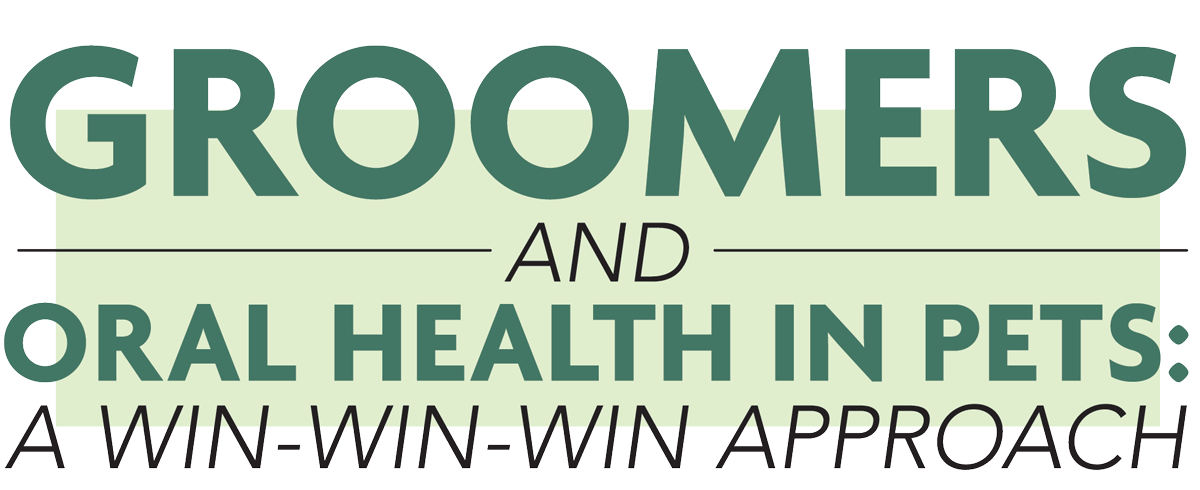
 ue to the increasing number of people owning pets, services for pets—especially grooming—have grown significantly over the past few years. As members of the family, pet owners recognize the need to care for the health of the pet, and grooming is an important aspect of fundamental hygiene care essential to maintaining the animal’s health and well-being.
ue to the increasing number of people owning pets, services for pets—especially grooming—have grown significantly over the past few years. As members of the family, pet owners recognize the need to care for the health of the pet, and grooming is an important aspect of fundamental hygiene care essential to maintaining the animal’s health and well-being.
Grooming is a term which encompasses a number of services,1 with today’s groomers bathing, dematting, sculpting the fur to meet breed standards, performing nail trims, cleaning ears and brushing the pets’ teeth. There are also a myriad number of potential health consequences which may result from inadequate grooming, and these consequences range in severity.2,3 Imagine if a pet owner is unable to trim their pet’s nails. Depending on the severity of untrimmed nails, the pet may experience changes in anatomic position, function of the paws and altered gait.
Oral health is one example of where groomers can have significant positive impact. Pet owners do not always equate oral malodor or halitosis with periodontal disease. Thus, it is imperative that the veterinary care team, including pet groomers, work together to remind pet owners that a pet cannot truly be healthy if they have periodontal disease. The oral cavity is constantly inundated by bacteria and provides the perfect environment for microbial growth. Animals require dental care to maintain overall health, just as humans. Dental disease causes pain and discomfort; and the associated disease processes may lead to systemic issues.5
The veterinary care team members know that animals require dental care to maintain oral and systemic health. However, dental health is seldom top of mind for pet owners. Additionally, many animals hide pain and obviously cannot tell the caregiver where it hurts. Oral malodor, changes in eating behavior and drooling are often accepted as “normal behavior” in pets by their owners. These changes may be seen during a grooming appointment, or the owner may mention that the chest area of the dog has been damp and dingy—a result of the dog drooling. To aid in oral health care even further, there is now a tool that is extremely beneficial in identifying infection in the oral cavity, which can be used by groomers.
A thiol test is a tool that can be used on awake animals that provides a fast, objective assessment of the pet’s periodontal health, allowing for a team approach to oral health. Simply slide the strip along the upper gumline of every canine or feline pet presenting for their grooming appointment, and if the strip changes color to any shade of yellow, infection is present. This color-changed strip should then be brought to the attention of the pet’s veterinarian. If there is no color change, the veterinary team should still be notified the test was performed, the negative result should be recorded in the pet’s medical record, and the pet owner can be celebrated and encouraged to maintain the great work done to keep their pet’s mouth healthy, and to continue to follow up with their veterinarian.
This dental health example shows the importance of pet groomers working together with veterinarians and veterinary technicians. Companion animals’ grooming needs are an important aspect of their health-related care and an important aspect of basic hygiene essential to maintaining their health and well-being. All members of the healthcare team are passionate about the needs of the pet, and all want what is best for the pet. Thus, working together to address potential health issues is a win for the hospital team, a win for the groomer and, most importantly, a win for the pet.
- Muvhali M, Singh T. (2021, June). Pet groomers’ occupational exposures: an under-researched group of workers in a growing pet-care industry. Current Allergy & Clinical Immunology. Vol 34, No 2, 87-95.
- McDonald SE, Doherty C, Sweeney J, et. al. (2022) Barriers to and facilitators of pet grooming among clients served by a subsidized grooming service program. Front. Vet. Sci. 9:1021707.
- McDonald SE, Sweeney J, Niestat L, et al. (2022). Grooming-related concerns among companion animals: preliminary data on an overlooked topic and considerations for animals’ access to health-related services. Front. Vet. Sci. 9:827348.
- American Pet Products Association. 2021-2022 APPA National Pet Owners Survey. Greenwich, CT: American Pet Products Association (2021).
- Burns, KM. (2019/2020, December/January). The Importance of Dental Homecare in the Management of Periodontal Disease. The NAVTA Journal. Pp. 9-16.
Kara Burns MS, MEd, LVT, VTS (Nutrition), VTS-H (Internal Medicine, Dentistry) is Editor in Chief of Today’s Veterinary Nurse. Kara is founder and president of the Academy of Veterinary Nutrition Technicians and is past president of NAVTA, the National Association of Veterinary Technicians in America. She has authored numerous articles and textbook chapters and is an internationally invited speaker, presenting on topics including leadership and technician utilization. Kara currently serves as clinical advisor and key opinion leader for PDX BIOTECH, makers of the OraStripdx thiol test (orastripdx.com).

